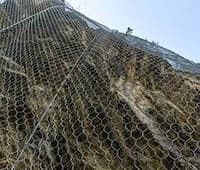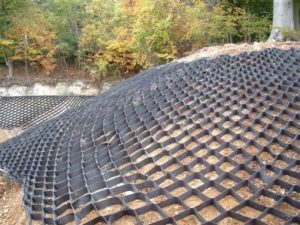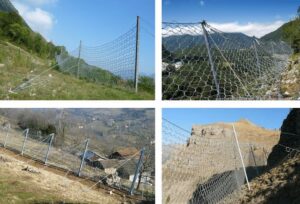Geogrids – Its types, Functions and Applications
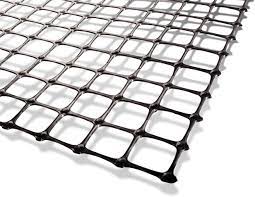
Geogrids is a polymeric material in addition to many polymers like polyethylene, polyvinyl alcohol polypropylene, etc. It is one of the most substantial inventions in synthesis which is used as a reinforcing material. They are formed by bonding intersecting ribs. They have huge open spaces in between the ribs known as “apertures”.
Geogrids can be classified as geosynthetic materials that are accustomed in the construction industry in the frame of reinforcing materials. It can be accustomed in the soil reinforcement or accustomed in the reinforcement of retaining walls and even more applications of the material are on their way to being developed.
The great demand and application of Geogrids in construction are due to their being good in rigidity and having a higher ability to distribute load across a broad area.
Table of Contents
Types of Geogrids
Type of Geogrids established on Pattern
Uniaxial Geogrids
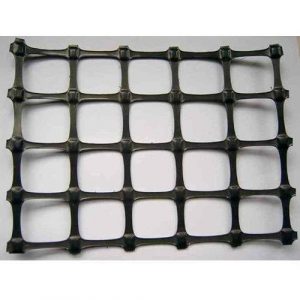
Uniaxial geogrids is chased by macromolecule polymers, and constructed by longitudinal tension. This category of geogrids is integrity with evenly distributed elliptical net structures. It has more flexible strength and tensile modulus. With this type of structure, the geogrids gives an ideal interlock system for the soil. It has high one-sided strength and capacity, and high lateral constraint for soil-rock mixtures. All property indexes of it are superior to geogrids without tensity. It is an ideal reinforced material currently, like reinforced earth structures in strengthened retaining walls, reinforced steep slopes, bridged support, and highways, railways, and airports.
It is stretched just in the longitudinal direction. Hence the stress is transferred only by that axis; even the tensile strength is higher in the longitudinal direction in contrast to the transverse direction in uniaxial geogrids.
Biaxial Geogrids
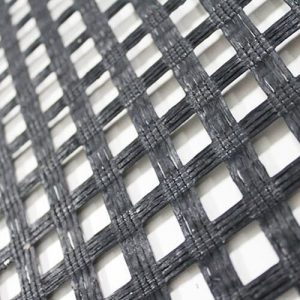
The material of biaxial geogrids is alike with the material of unidirectional geogrids. Its chemical property isn’t active as well. It is chased by macromolecule polymers and constructed by longitudinal and horizontal tensions. This type of material has a more tensile strength in both longitudinal and horizontal directions. This kind of structure gives an interlock system for the soil and is fitted for the improvement of roadbeds with wide areas of permanent loads, for instance, treatment of soft soil foundation and augmented earth structures.
It is stretched in two directions (longitudinal and transversal), hence the stress is equally distributed in both directions. In biaxial geogrids, the longitudinal direction is known as machine direction (MD) and the transverse direction is known as cross-machine direction (CMD). Since the strength is equal forth both axis these geogrids are particularly preferred in construction.
Triaxial geogrids

Triaxial is a revolutionary afresh geogrids product. The triangular design of triaxial geogrids, associated with the increased rib thickness and junction ability, greatly enhances aggregate interlock and confinement – resulting in the optimal structural performance of the mechanically stabilized layer. Research signifies that triaxial geogrids can lessen aggregate base/sub-base requirements by 25% to 50%.
Triaxial geogrids supplies performance in three dimensions:
- Multidirectional Load Distribution
- Multidirectional Load Distribution
- Junction stability and ability
- Chief Performance for Surfaced and Unsurfaced Roads
- Fewer Stress on Subgrades
Types of Geogrids established on manufacturing
Extruded geogrids
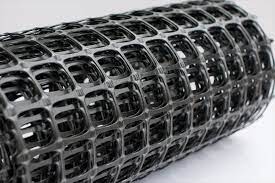
They are built from polypropylene accustomed for ground stabilization and soil reinforcement applications. They are plane structures in a polymer that are extruded and next pulled: this might either be done in one direction or the two major directions. They are applied in soil and road paving reinforcement.
Woven geogrids
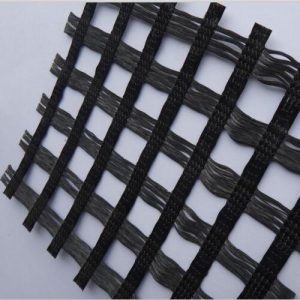
It is manufactured by combining polymeric—generally polyester or polypropylene—and bending them into a mesh pattern that is further coated with a polymeric lacquer.
Bonded geogrids
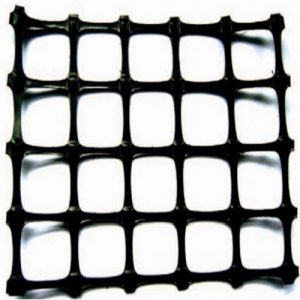
It is constructed by bonding, typically at right angles, two or more sets of strands or other components.
Other Types of Geogrids
Fiberglass geogrids is a new supreme material used for reinforcing road surfaces and bases, it is produced of fiberglass filament, and shielded with special solutions and High longitudinal and horizontal intensity, moderate elongation rate, anti-alkaline, and aging resistance, broadly used in the asphalt road surface, concrete road surface, and reinforcing road infrastructure.
PET Geogrids Terylene geogrids is an afresh material for reinforcing road infrastructures; it is produced of terylene filament, and shielded with a special solution and High longitudinal and horizontal strength, moderate elongation rate, anti-alkaline, and aging resistance.
Warp Knitted Fiberglass Geogrids is woven by great Tensile Modulus fiberglass filament as the raw material is protected with adhesive.
Application of geogrids
Geogrids have been greatly used for the construction of earth-sustained and earth-supported structures like mechanically stabilized earth (MSE) retaining walls, steep slopes, and further structures. Its application areas comprise.
Geogrids for pavements
Geogrids applications in pavement and roadway are made up of subgrade improvement, reinforcing the core course, sub-infrastructure, and surface courses. The outward displacement of railway ballast is apprehended and the settlement is shortened when they are reinforced with geogrids soft subgrade, the stiffer geogrids function better than flexible geogrids as the latter instantly reacts to the applied load.
Geogrids for retaining wall
Geogrids are accustomed to stabilizing the backfill in retaining walls. The stability of the earth retaining wall counts on the friction angle. Creep and stress relaxation properties influence the performance of geogrids in a retaining wall.
Geogrids for soil foundation
Both Uniaxial and Biaxial geogrids are typically used in foundation works. The main condition to attain good stability is the interlocking capacity of geogrids and aggregates.
Geogrids for slope stabilization
The geogrids reinforcement in slope prompts primarily the slope deformation and stability. The bearing capacity majorly depends on the length of the geogrids. To attain the best performance the aperture size should be closely equal to 0.2 times the width of the footing.
Geogrids for structural elements
In structural elements, the geogrids are used as further reinforcement and as shear reinforcement. To obtain good strength fibers such as polypropylene and steel are used. The geogrids reinforcement brings about high ultimate load-bearing capacity], enhanced energy absorption and reduced slippage, shear, and bond strength, lesser drying shrinkage, and shortened degradation rate.
Ocean Non-Woven Pvt Ltd. provides reliable results for soil stabilization, earth retention, and soil erosion control projects occupying geotextile and geogrids, earth anchors, walls and slopes, turf reinforcement, revegetation, containment, Geomembrane liners, and more.

